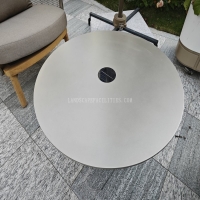Welcome to the website for landscape facilities products and knowledge.
Are there any recommended placement guidelines to avoid interference with outdoor irrigation systems?
When installing outdoor irrigation systems, proper placement is crucial to avoid interference and ensure optimal performance. Understanding the fundamental principles of landscape integration can save homeowners from costly repairs and inefficient watering patterns.
The primary consideration involves maintaining adequate distance from electrical components and other underground utilities. Irrigation lines should be installed at least 12 inches away from any electrical wiring or lighting systems to prevent potential interference and safety hazards. This separation ensures that electrical currents don't affect water pressure sensors or controller signals while protecting wiring from moisture damage.
Strategic planning begins with comprehensive mapping of your landscape. Before installation, document all existing features including trees, garden beds, hardscapes, and drainage patterns. Consider root growth patterns of mature plants, as expanding root systems can disrupt irrigation lines over time. Position sprinkler heads at least 18-24 inches from tree trunks and major shrubs to prevent root interference and ensure even water distribution.
Water pressure management plays a vital role in preventing system interference. Zone planning should account for pressure requirements of different emitter types, keeping drip irrigation systems separate from spray heads. Install pressure regulators at zone valves rather than relying solely on mainline regulation to maintain consistent performance across all stations.
Controller placement requires careful consideration of environmental factors. Mount irrigation controllers in protected areas away from direct sunlight, excessive moisture, and temperature extremes. Ensure controllers are positioned at least 5 feet from swimming pools, water features, or areas prone to flooding to prevent electrical hazards and moisture damage.
For systems integrating smart technology, wireless signal interference must be addressed. Place weather sensors and wireless receivers away from large metal structures, dense concrete walls, and other electronic equipment that might disrupt communication signals. Maintain clear line-of-sight between components when possible, and consider signal boosters for large properties.
Regular maintenance positioning is equally important. Ensure easy access to valves, backflow preventers, and drain points by keeping them clear of vegetation and debris. Create maintenance pathways that don't compromise the irrigation system's integrity while allowing technicians to service components without damaging surrounding landscape features.
Seasonal adjustments should factor into placement decisions. In colder climates, ensure proper drainage away from irrigation components to prevent freeze damage. Position above-ground components where they won't be damaged by snow removal equipment or winter storage items.
By implementing these strategic placement guidelines, homeowners can create efficient outdoor irrigation systems that operate without interference while maximizing water efficiency and system longevity. Proper planning during the installation phase prevents most common issues and ensures years of trouble-free operation.
Related search:

Recommendation
Outdoor stainless steel table with solar-powered ambient lighting feature - excellent design.